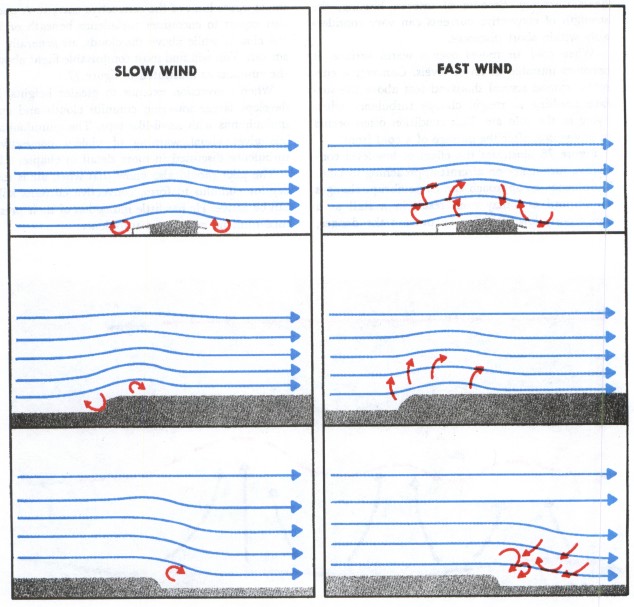JoeF wrote:
That probably won't occur in my lifetime; things in confusion seem not to smooth out very fast.
That's the nature of turbulence ... whether turbulence of wind or turbulence of thought.

JoeF wrote:
Has anyone done full smoke study of the air flow field below the top of the Torrey cliff during various wind conditions?
Not that I know of. It would be a difficult thing to do given the many different cliff profiles and wind direction combinations. For example, where the accident happened might be completely smooth in west conditions, but it could be very turbulent in northwest conditions. Slicing that area with smoke studies at varying altitudes and locations for a variety of wind directions would be a daunting task. Maybe a better approach would be to build a model of the cliff line. I know they have technology now that can carve almost any shape from data points. I'll bet there's enough accurate data on the cliff to build such a model. My wind tunnel knowledge is about 30 years out of date, but because it's a model, I think the data would have to be corrected for viscosity (Reynold's number?).
JoeF wrote:
The face of the cliff contributes something to the flow field in terms of heat by the sun. Also, the height of the cliff and the cliff's verticality help to form a profile of flow different from low-angled smooth hills; just how much front-of-cliff windshear/rotor and rotor-calm occurs during certain times of day with certain meta ambient wind speeds?
Those are the really hard questions, and I don't know how they can be answered except from experience. I believe the wind data that I showed above was taken at the Gliderport itself. The actual wind direction and strength at the site could vary considerably from that plot.
JoeF wrote:
Was she trained well for examining specialized wind gradients?
I don't know for sure, but I've been told that she was trained by the Torrey Pines concession.
JoeF wrote:
I am wondering what the schedule is for release of captured-rotated-heated bubbles that are perhaps low-hugging the cliff are? Sporadic complex wind shears could be occurring when most everything else is seemingly smooth beyond the active temporary regions. Some events could simply wrap a non-airframed gliding parachute into wads.
I'll bet there's a complex mathematical model out there that attempts to predict these things. I'll also bet that the math involved would be beyond what I'd want to tackle. But with your mathematical background Joe ... maybe you could really do something with it.



 The face of the cliff contributes something to the flow field in terms of heat by the sun. Also, the height of the cliff and the cliff's verticality help to form a profile of flow different from low-angled smooth hills; just how much front-of-cliff windshear/rotor and rotor-calm occurs during certain times of day with certain meta ambient wind speeds? Was she trained well for examining specialized wind gradients?
The face of the cliff contributes something to the flow field in terms of heat by the sun. Also, the height of the cliff and the cliff's verticality help to form a profile of flow different from low-angled smooth hills; just how much front-of-cliff windshear/rotor and rotor-calm occurs during certain times of day with certain meta ambient wind speeds? Was she trained well for examining specialized wind gradients?
